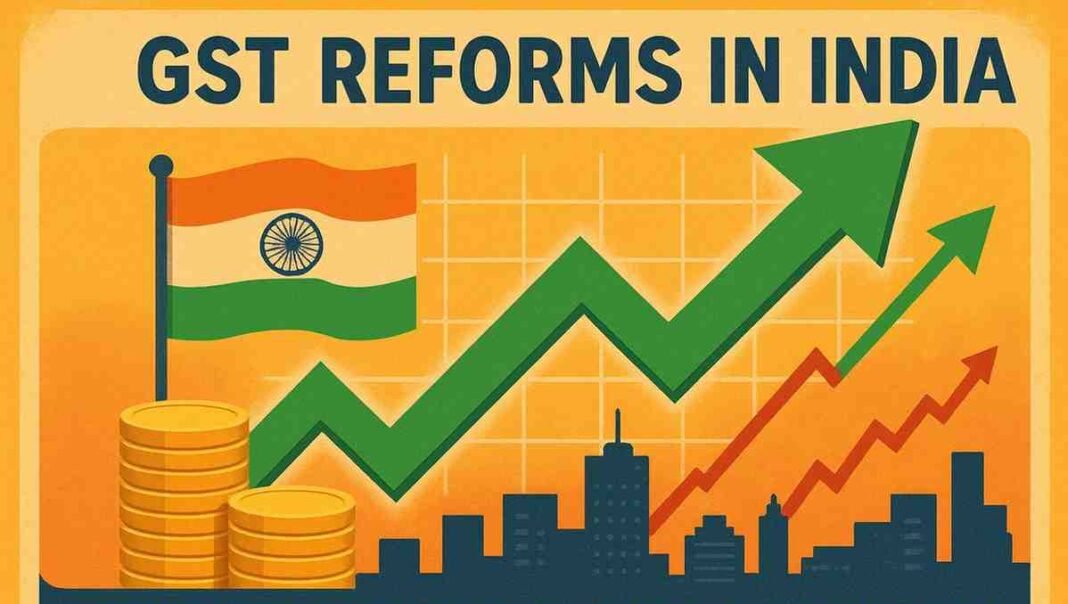GST Overhaul Marks Historic Step in Tax Reform
In a major reform hailed as the biggest indirect tax shake-up since 2017, the Goods and Services Tax (GST) Council has approved a two-tier structure of 5 per cent and 18 per cent. Announced by Finance Minister Nirmala Sitharaman, the decision aims to rationalise the tax regime, simplify compliance, and provide relief to households, small businesses, and industries.
The new rates will come into effect from September 22, 2025. Alongside the two-tier structure, the Council introduced a fresh 40 per cent slab targeting high-end luxury and ‘sin’ goods, including cigarettes, pan masala, caffeinated drinks, luxury motorcycles, and yachts.
Prime Minister Narendra Modi lauded the decision, calling it a “pro-people, pro-growth measure” that would benefit farmers, middle-class families, MSMEs, and youth while boosting India’s economic growth.
What Gets Cheaper and What Gets Costlier
A wide basket of consumer goods and essential services will see GST reductions. Household items such as ghee, butter, paneer, namkeen, pasta, chocolates, shampoos, and toothpaste will now attract only 5 per cent GST. Medical relief also received a major push as over 30 cancer drugs, medicines for rare diseases, and several medical consumables were exempted entirely. Education services and school supplies like notebooks and pencils also fall under the zero-rate slab.
Agricultural and rural economy-focused items such as tractor tyres, fertilisers, irrigation equipment, and diesel engines have been moved to the 5 per cent slab, providing relief to farmers.
Consumer electronics like televisions above 32 inches, refrigerators, washing machines, and air conditioners will remain under the 18 per cent rate. Automobiles, including small cars and motorcycles up to 350cc, also stay within this slab, a move expected to boost demand in the auto sector.
On the other hand, luxury and sin goods will see a spike in tax under the new 40 per cent slab. These include cigarettes, bidis, pan masala, gutka, carbonated drinks, luxury motorcycles exceeding 350cc, and recreational assets like yachts and private aircraft. Online betting, casinos, gambling, and horse racing have also been brought under this category.
Market and Business Reactions
The announcement sent positive ripples across the stock market. On Thursday, the Sensex surged by over 650 points while the Nifty climbed past the 24,800 mark, led by auto stocks. Shares of Maruti Suzuki, Tata Motors, and Mahindra & Mahindra soared to an 11-month high as investors cheered the reduction in GST on cars and motorcycles.
Andhra Pradesh Chief Minister N Chandrababu Naidu hailed the reform as “pro-poor and growth-oriented,” crediting it for ensuring equitable benefits across society. Several other states echoed similar sentiments, with leaders emphasising how the move would ease burdens on households and stimulate economic activity.
Expert Views: Growth and Fiscal Balance
Economists see the reform as a timely booster for India’s economy. Bank of Baroda economist Sonal Badhan said the new GST regime could raise GDP growth by 0.2 to 0.3 percentage points in fiscal 2026, with an even larger impact expected in FY27.
While the estimated annual revenue loss due to rationalisation is pegged at ₹48,000 crore, experts believe the shortfall will be offset by a surge in consumption, especially during the festive season. The government has emphasised that the changes were long in the making and unrelated to recent US tariff measures.
Opposition Welcomes Move, Questions Timing
Opposition parties, including Congress and Trinamool Congress, welcomed the reduction in rates and simplification of GST but criticised the timing. Senior Congress leader P Chidambaram described the reforms as “8 years too late” and questioned whether economic pressures or electoral considerations had prompted the sudden change.
Despite the political criticism, there is broad consensus that the GST 2.0 reform represents a significant step towards making the indirect tax system more transparent, efficient, and citizen-friendly.
Looking Ahead
With the reforms set to roll out from September 22, India’s GST system enters a new phase designed to balance revenue needs with affordability for consumers. By streamlining rates and exempting essentials, the government aims to expand the tax base while stimulating demand. The upcoming festive season will be the first major test of the policy’s effectiveness in driving consumption and sustaining economic momentum.








